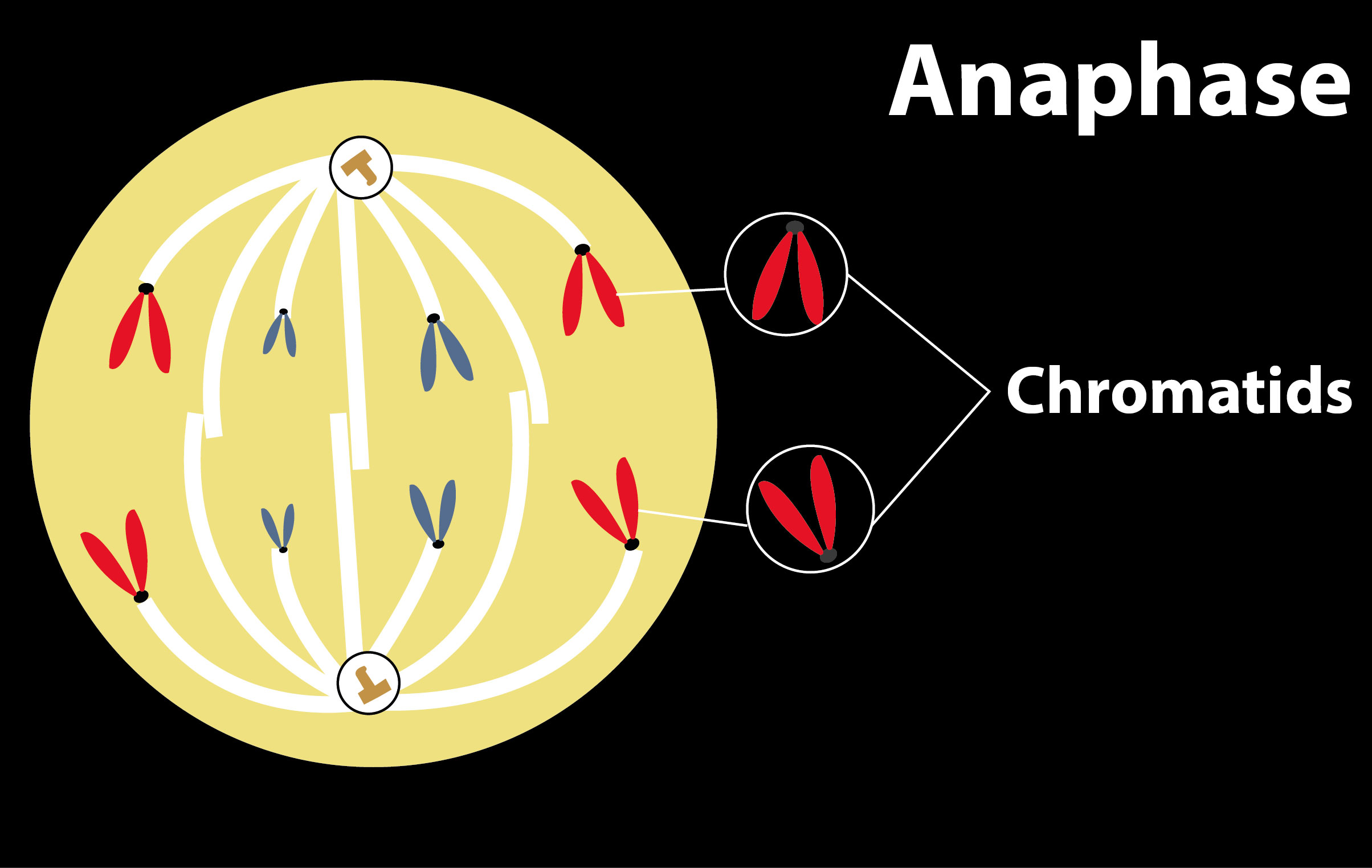
At which of the following stages of cell division, the separation of chromatids and their movement to opposite poles occur?
A. Prophase
B. Anaphase
C. Metaphase
D. Telophase
Answer
573.3k+ views
Hint: It is the third stage of the cell division in which the bridge is formed to separate the chromatids. It is the characteristic stage that occurs before the telophase stage in the cell cycle and also moves the chromatids apart.
Complete answer:
The stage of cell division when replicated chromosomes are split and the newly-copied chromosomes (daughter chromatids) are pulled to the opposite poles by the spindle fibers of the cell is called the Anaphase stage. It is a stage of mitosis or meiosis after the process of metaphase.
Additional Information: -Cell division is the process by which a parent cell divides into two or more daughter cells. It usually occurs as part of a larger cell cycle.
-There are two distinct types of cell division:
(a)A vegetative division, where each daughter cell is genetically identical to the parent cell (mitosis)
(b)A reproductive division, where the number of chromosomes is reduced to half in the daughter cells to produce haploid gametes (meiosis).
-Anaphase is a stage during eukaryotic cell division in which the chromosomes are segregated to opposite poles of the cell.
-Anaphase starts after the cell passes the spindle formation checkpoint, which allows chromosomes or chromatids to separate.
-In meiosis the Anaphase is divided into two stages: Anaphase I and Anaphase II.
So, the correct answer is ‘Anaphase’.

Note: Cell division consists of various stages: Prophase – first stage of division. Chromatin threads condense to form shorter more visible strands called chromosomes. Metaphase – chromosomes arrange themselves on the metaphase plate in the middle of the cell. Anaphase – very short stage of the cell, the chromosomes split and the sister chromatids move to opposite sides of the cell. Telophase – last stage of the cell cycle, separation of daughter cells by formation of the cell plate.
Complete answer:
The stage of cell division when replicated chromosomes are split and the newly-copied chromosomes (daughter chromatids) are pulled to the opposite poles by the spindle fibers of the cell is called the Anaphase stage. It is a stage of mitosis or meiosis after the process of metaphase.
Additional Information: -Cell division is the process by which a parent cell divides into two or more daughter cells. It usually occurs as part of a larger cell cycle.
-There are two distinct types of cell division:
(a)A vegetative division, where each daughter cell is genetically identical to the parent cell (mitosis)
(b)A reproductive division, where the number of chromosomes is reduced to half in the daughter cells to produce haploid gametes (meiosis).
-Anaphase is a stage during eukaryotic cell division in which the chromosomes are segregated to opposite poles of the cell.
-Anaphase starts after the cell passes the spindle formation checkpoint, which allows chromosomes or chromatids to separate.
-In meiosis the Anaphase is divided into two stages: Anaphase I and Anaphase II.
So, the correct answer is ‘Anaphase’.

Note: Cell division consists of various stages: Prophase – first stage of division. Chromatin threads condense to form shorter more visible strands called chromosomes. Metaphase – chromosomes arrange themselves on the metaphase plate in the middle of the cell. Anaphase – very short stage of the cell, the chromosomes split and the sister chromatids move to opposite sides of the cell. Telophase – last stage of the cell cycle, separation of daughter cells by formation of the cell plate.
Recently Updated Pages
Master Class 12 Economics: Engaging Questions & Answers for Success

Master Class 12 Maths: Engaging Questions & Answers for Success

Master Class 12 Biology: Engaging Questions & Answers for Success

Master Class 12 Physics: Engaging Questions & Answers for Success

Master Class 8 Maths: Engaging Questions & Answers for Success

Class 8 Question and Answer - Your Ultimate Solutions Guide

Trending doubts
What is meant by exothermic and endothermic reactions class 11 chemistry CBSE

Which animal has three hearts class 11 biology CBSE

10 examples of friction in our daily life

One Metric ton is equal to kg A 10000 B 1000 C 100 class 11 physics CBSE

1 Quintal is equal to a 110 kg b 10 kg c 100kg d 1000 class 11 physics CBSE

Difference Between Prokaryotic Cells and Eukaryotic Cells




